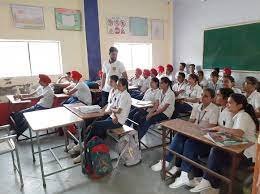In a recent analysis conducted by the Ministry of Education for the eighth edition of the National Institution of Ranking Framework (NIRF), it has been discovered that a significant concentration of faculty members with doctoral qualifications is found within the top 100 institutions. Conversely, the remaining institutions have a limited number of faculty members possessing doctoral degrees, creating a substantial imbalance across the higher education landscape. The ministry emphasizes that this dearth of doctoral-qualified faculty poses a serious handicap, as the mentorship received during doctoral training plays a vital role in preparing educators for successful teaching careers in higher education.
The findings of the analysis underscore a noteworthy disparity in the distribution of faculty members with PhDs across different types of institutions. Among colleges, the minimum percentage of faculty members possessing a PhD stands at 61.06%, while management institutions boast the highest proportion with 91.60% holding doctoral qualifications.
The ministry’s analysis sheds light on the crucial role that doctoral training and mentorship play in shaping the capabilities of faculty members in higher education. The mentorship received during the course of doctoral studies equips educators with the necessary skills, knowledge, and guidance to excel in their teaching careers. This mentorship fosters a deep understanding of academic research, pedagogical techniques, and subject matter expertise, all of which are pivotal for effective teaching in higher education.
However, the concentration of faculty members with doctoral degrees primarily within the top 100 institutions raises concerns about the quality and accessibility of mentorship opportunities for educators in other institutions. The limited availability of doctoral-qualified faculty in these institutions significantly hampers the ability to provide similar levels of mentorship and training to aspiring educators. As a result, the teaching quality and academic experience for students in these institutions may be adversely affected.
The ministry’s analysis highlights the need for concerted efforts to address the imbalance in doctoral-qualified faculty across institutions. Encouraging and facilitating doctoral studies among faculty members in institutions beyond the top 100 can help bridge this gap. Creating supportive frameworks and incentives for faculty members to pursue doctoral degrees will not only enhance their own capabilities but also contribute to the overall improvement of higher education in the country.
Furthermore, the analysis underscores the importance of collaboration between institutions in sharing resources and expertise. Establishing partnerships and networks between institutions can facilitate the exchange of knowledge and mentorship opportunities. This collaboration can help ensure that faculty members in institutions with fewer doctoral-qualified staff receive the necessary support and guidance to excel in their teaching careers.
The Ministry of Education acknowledges the pressing need to address the issue of limited faculty members with doctoral qualifications in certain institutions. By recognizing this challenge as a priority and implementing strategic measures, such as promoting doctoral programs, fostering collaboration, and providing mentorship opportunities, the ministry aims to enhance the quality of higher education and create a more inclusive and equitable academic landscape for educators and students alike.
The analysis conducted by the Ministry of Education highlights the concentration of faculty members with doctoral qualifications in the top 100 institutions, leaving other institutions with a scarcity of doctoral-qualified staff. Recognizing this as a significant handicap, the ministry emphasizes the role of mentorship received during doctoral training in preparing faculty for successful teaching careers. To address this issue, efforts must be made to promote doctoral programs, foster collaboration between institutions, and provide mentorship opportunities across the higher education sector. By doing so, the quality and accessibility of education can be enhanced, creating a more equitable and enriching learning environment for all.




